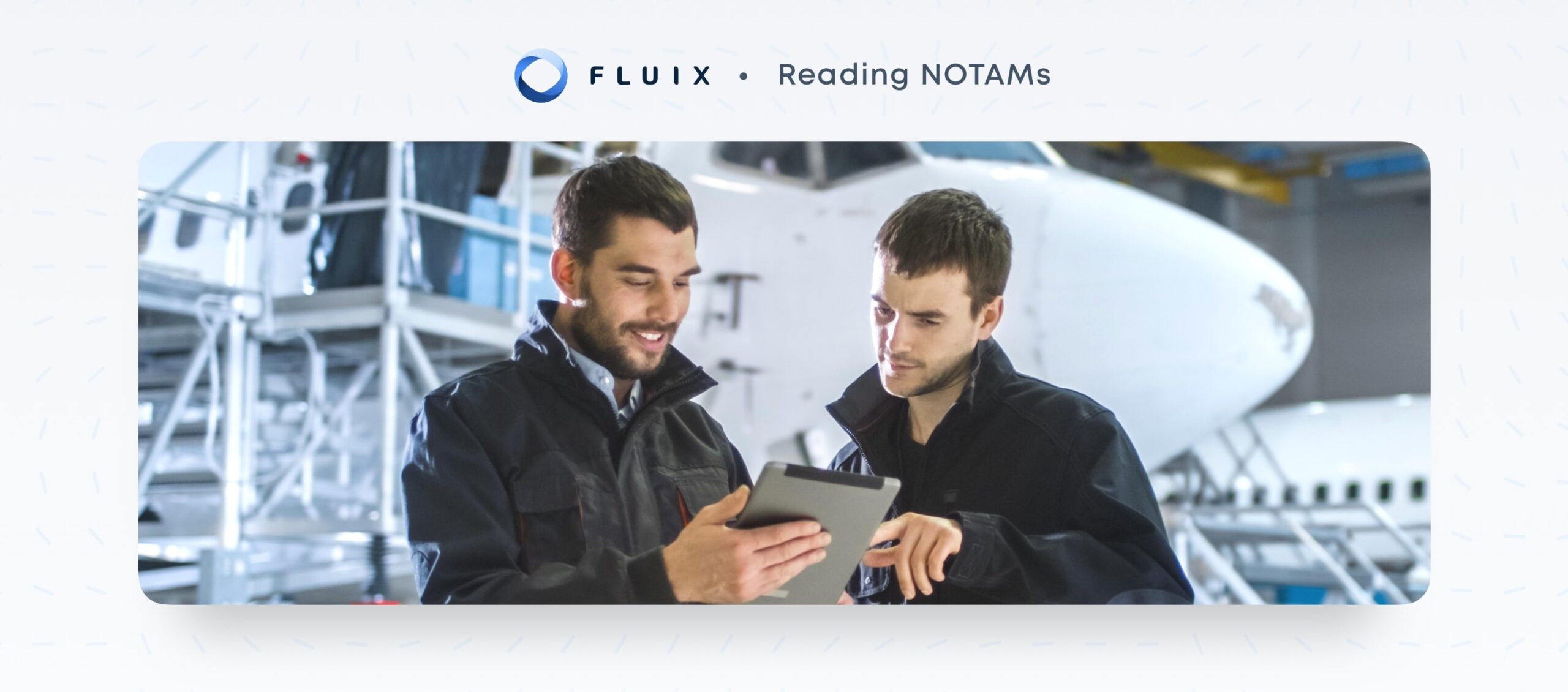Although Covid-19 still lingers, the recent increase in passenger numbers across the aviation sector has brought with it a notable sense of optimism. Hope is most definitely on the horizon, with many publications, including Forbes, publishing predictions of a decade of growth for the aviation industry. However, the ripple effect of furloughs and cutbacks are still evident, and it may be some time before everything in the sector is back running at full-throttle.
Let’s take a look at some trends in aviation, brought about by the global Covid-19 pandemic.
1. Operational efficiency struggles.
As Covid-19 formed its vice grip on the world, companies in the aviation sector looked for operational efficiency gains more than ever before. For some, cutting costs became an immediate necessity, which meant job losses, fleet size reductions (where possible), and relying on smaller teams to take on additional tasks. For others, payload expectancy on operating aircraft routes needed to be adjusted to account for less passengers, and more attention needed to be paid to aircraft maintenance for aircraft that couldn’t be replaced as planned.
It’s no secret that the future of some airlines depended on them being able to expand on their offerings. For airlines who added new cargo routes, finding the most cost effective and fuel efficient flight paths in new territories also posed a challenge. These points are just the tip of the iceberg when it comes to operational adjustments, but they all had one thing in common: the search for greater efficiency.
2. Challenges of streamlining tasks across smaller teams.
Business at aviation operators/carriers who rely on chartered and private flights has been slack over the past 20 months, and many are still struggling. From recent conversations we’ve had with our customers about the current state of the airline industry, there has clearly been a desire to streamline all facets of their work. For some, it’s the key to staying in business; for others, it’s because they have furloughed some of their workforce and need their remaining team members to take on extra tasks to compensate.
Due to furloughs and layoffs, staff across almost all aviation teams have had to take on additional duties. For example, in some smaller companies, chief pilots have taken charge of flight plan distribution and training that would previously have been covered by other team members. Task management became both a technical and logistical challenge that many aviation companies used task management software to solve.
3. New routes, new payloads, and new opportunities.
When the vast majority of the general public stopped flying as the pandemic grew, small airlines bore the brunt of the impact of Covid-19 on aviation. Where larger airlines may have had existing cargo or private charter income to fall back on, and infrastructure to adjust aircraft for 100% cargo runs, small regional airlines undoubtedly suffered.
However, as always, the underdog finds a way to forge ahead. As part of airline recovery plans, some smaller airlines began looking for opportunities in new regions, with different payload considerations. A great example of this is Swedish airline, Amapola Flyg, who successfully bid for a short-term contract to operate flights between Dublin and Donegal in Ireland, when Stobart Air ceased operations.
This was the first route outside of Sweden for the airline, whose fleet mainly comprises of Fokker 50 aircraft. Although it was a short-term contract, it proved that it can be done, and Amapola’s innovative spirit will no doubt inspire others
4. Pilot training upkeep.
There have been concerns about the ability of out-of-work pilots to pay for their required ongoing training, especially evidence-based training. The emergence of charities, such as PilotsTogether in the UK, has helped several out-of-work pilots to keep their essential paperwork and training up-to-date.
Some commercial and private pilots who were type rated for specific aircraft have moved to cargo airlines, due to uncertainty with passenger numbers and the availability of guaranteed work. It’s difficult to forecast the demand for pilots after Covid-19 has subsided, but a positive outlook from industry experts and analysts is an encouraging sign.
5. Adapting aircraft for exclusive cargo flights.
Exclusive cargo operations presented a low-barrier entry opportunity for airlines who could quickly adapt their aircraft and operations. As the Covid-19 pandemic enveloped the world, mainstream media flooded print and digital publications with images and videos of behemoth jet aircraft taking off on PPE collection and delivery missions. These aircraft were often commercial airliners with PPE strapped into whatever seats hadn’t been removed to create additional space.
Another trend in the aviation industry is the increasingly active adoption of technologies. Let’s take a deeper look into that.
Top Podcasts for Aviation
Discussions of technology, regulations, aircraft-specific reports, product reviews, and more
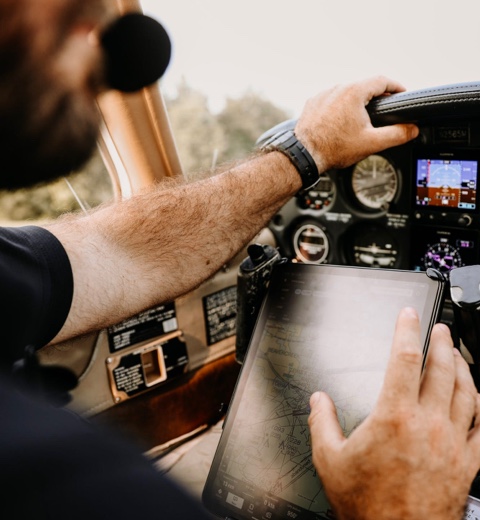

Current Role of Software Technologies in Aviation Process Automation
It’s crucial that providers of software technologies actively meet the challenges that aviation companies encounter every day, not just challenges faced by the airline industry due to Covid-19. During the pandemic, this became even more of a focal point for aviation companies who were cutting costs and needed to be very frugal when investing in new technology. Those who invested in process automation systems were able to remove a number of task-based blockers.
A dynamic process automation system can:
- Upgrade how aviation companies distribute flight documents and other paperwork digitally, in order to eliminate manual rework.
- Improve accuracy of data submissions from flight crew.
- Automatically aggregate data and save time for the Data Control department. Data can be collected through a user-friendly interface before being moved into Quickbase, Airtable, and other database tools.
- Allow for swifter communication between all departments, both in the air and on the ground. Passing flight data and discrepancy reports faster from the flight deck to maintenance teams allows for better checks and maintenance planning – keeping aircraft as airworthy as possible for as long as possible.
What Fluix Offers for Aviation
There are a number of use cases that can be covered by software services like Fluix. Here are just a few examples:
Electronic flight bags available on mobile devices, online and offline
Creating an electronic flight bag can remove up to 25-30kg of paper manuals from the flight deck. In addition, airlines can decrease turnaround time by sending important documents via Fluix to pilots, cabin crew and maintenance engineers in real-time.
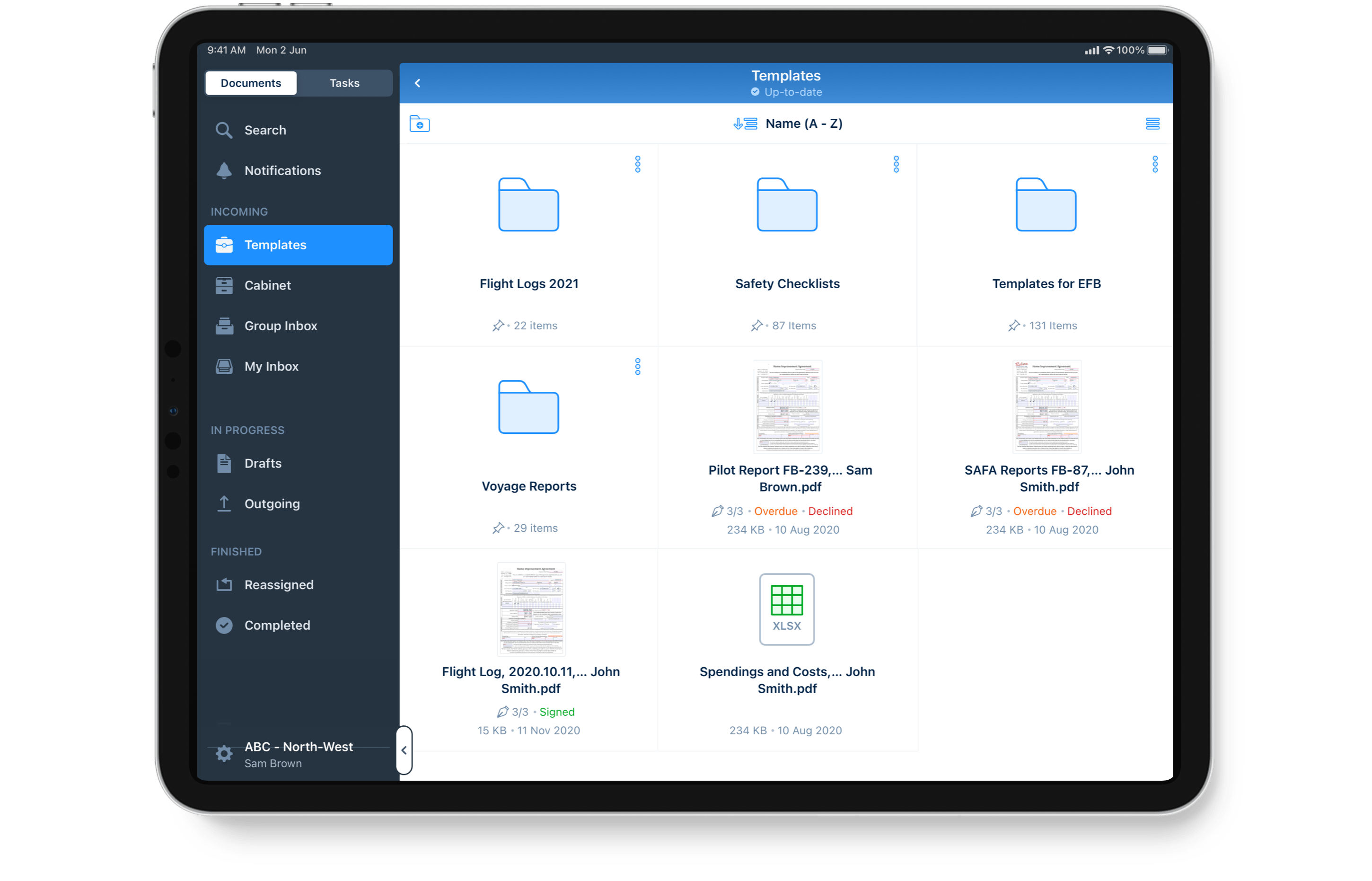
Aircraft maintenance
As work progresses on the aircraft and various sections of a checklist are performed, all parties can log in to Fluix at any time to see the progress being made. When teams look at the data collected in aircraft maintenance checklists, they can monitor and analyze trends, such as parts degrading or the need for preventive maintenance. This is especially important in older aircraft that have old technology that does not provide this information otherwise.
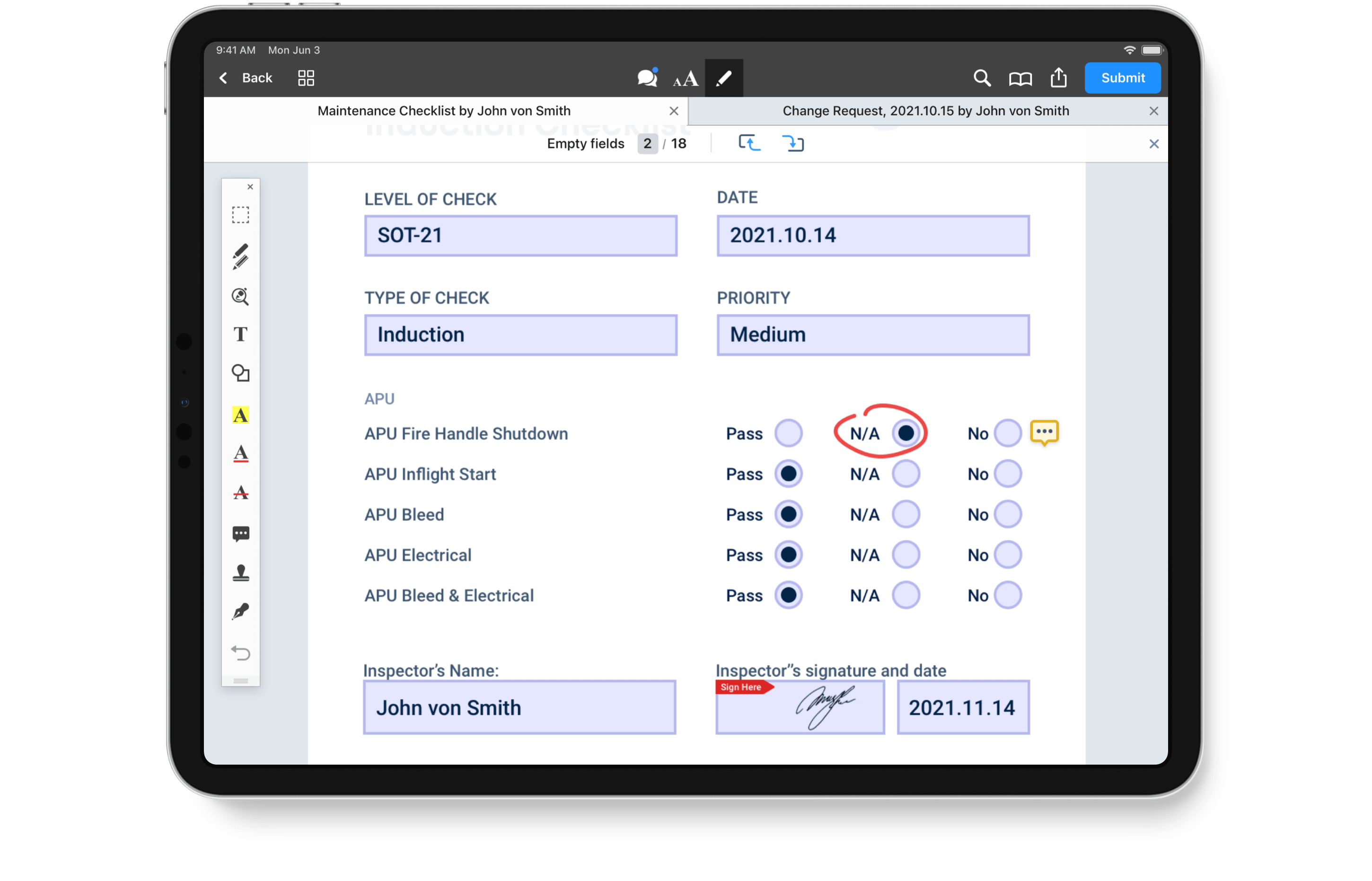
Safety management
Full traceability of documents is vital for ensuring compliance with industry safety requirements. With the help of Fluix, all documents are located in one centralized place and can be accessed in seconds. You can also track document history and know exactly where each document is at all times. While a manager is assigned a document, nobody else can edit it.

Pilot training
Matching evidence-based training with evidence-based software creates a dream team of efficiency. Let’s use the case study of Titan Airways as an example; the airline needs a large amount of data to conduct its evidence-based training operations. Fluix enabled Titan to collect data on iPads. It is easy to track where in the workflow the training paperwork is, from training completion documents, to Pilot and Cabin Crew training files.
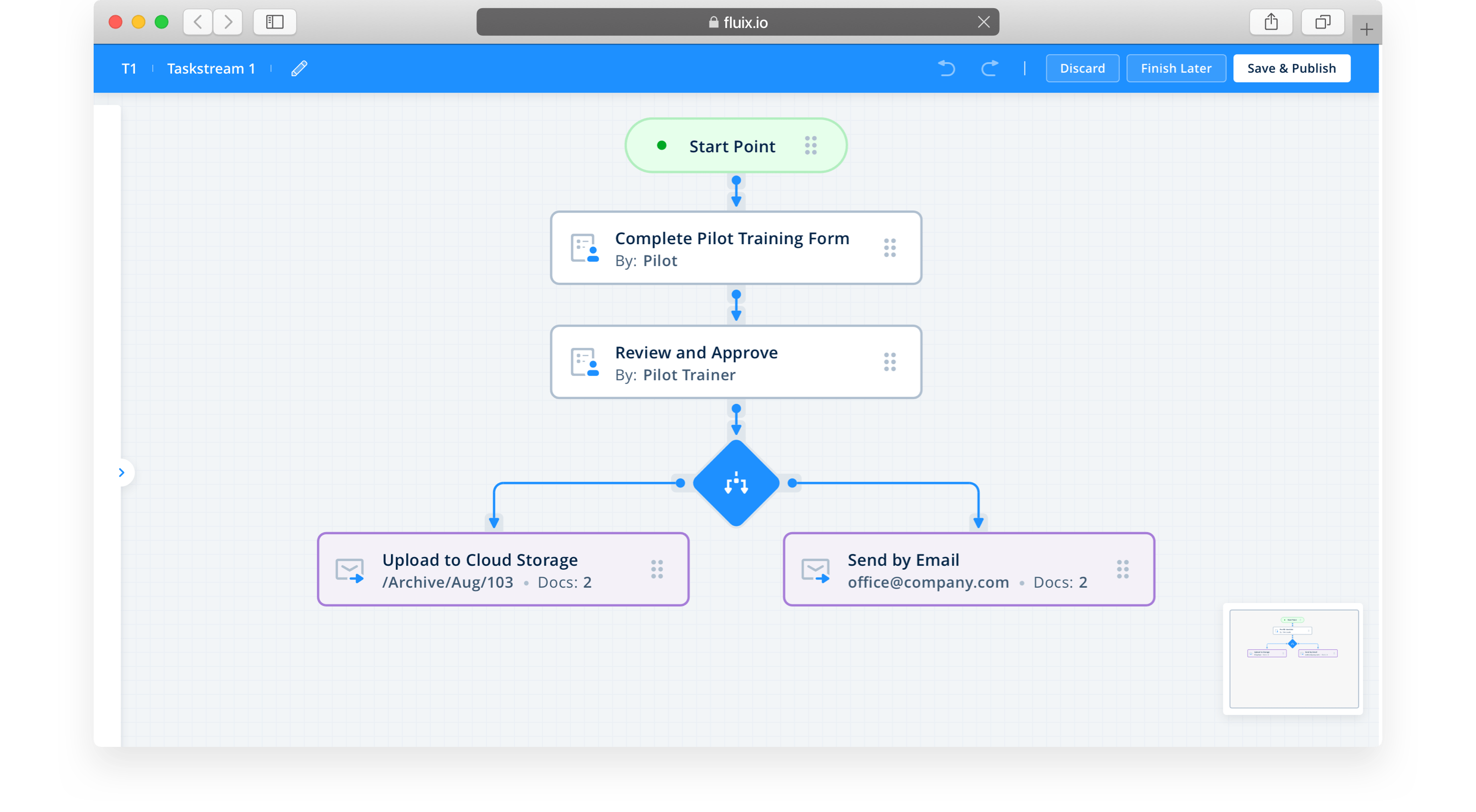
Whilst the challenges posed by Covid-19 may still loom in the aviation sector, now is the time to plan for the future. We’ve seen first-hand how document and task management can be the key to unlocking greater operational efficiency. Let Fluix be the wind beneath your wings!



